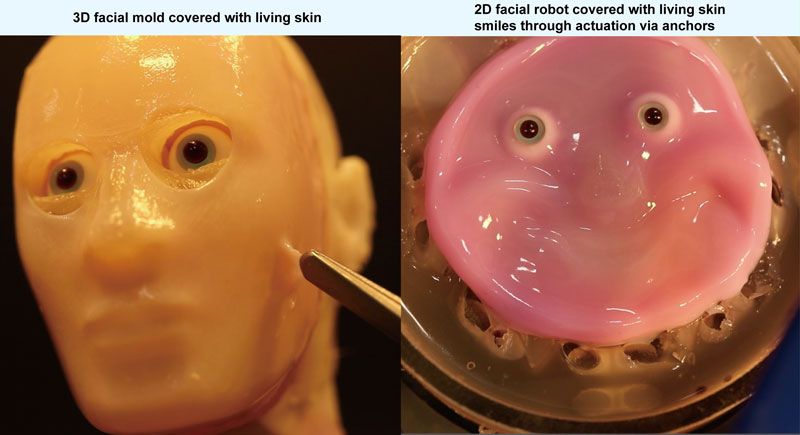Researchers from the University of Tokyo have found a way to reliably attach artificial skin to any surface of robots. Most solutions in this area are not very reliable – the skin can fall off, tear or crack. The Japanese were guided by an analogy with the ligaments in the subcutaneous layer of a person, which helped to find a reliable way to attach artificial skin to robot surfaces of any curvature.

Image source: The University of Tokyo
The researchers came up with and tested a system of V-shaped holes (perforations) on the surface of the robots, through which artificial skin was attached. The main difficulty was that the collagen gel, which ensured reliable adhesion of the skin to the surface and was supposed to hold it in the fasteners, was too sticky and viscous to be introduced into the perforation holes. To solve the problem, the scientists used the plasma surface treatment method to work with collagen, and they succeeded.

«In this study, we were able to reproduce the human appearance to some extent by creating a face from the same surface material and structure as humans, the authors of the work say. In addition, during this study, we identified new problems, such as the need to form wrinkles on the skin surface and create a thicker epidermis to achieve a more human appearance. Thicker skin, by the way, will leave room for installing various sensors there. Robots will be able to expose their faces to the sun and wind, and enjoy real sensations.

The researchers used movable mounts to demonstrate the facial expressions of the artificial face. Without any muscles, the face could smile (rather creepily) without any consequences for the skin on the surface layer and at the mount sites. The development could also help in training plastic surgeons and in solving other cosmetic problems.